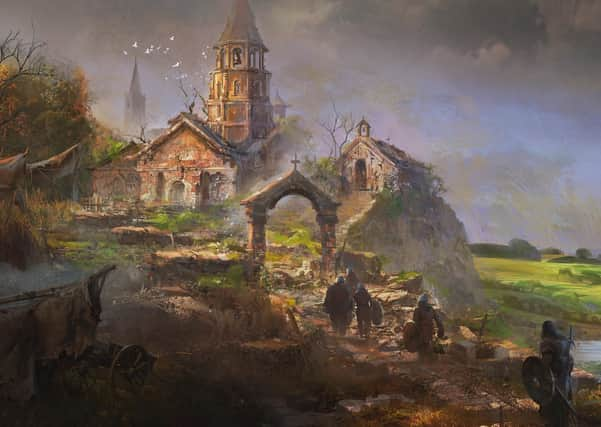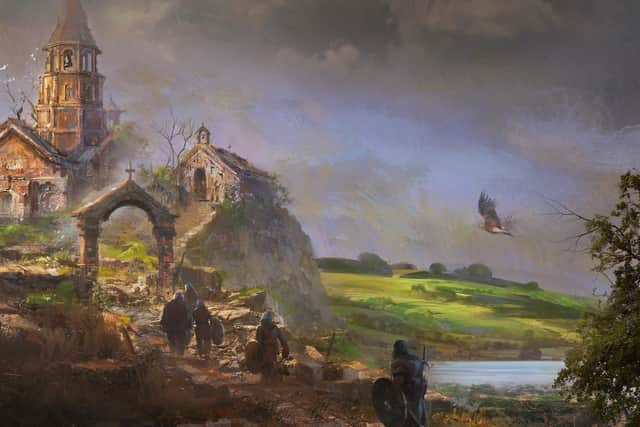How Peterborough features in one of world’s biggest selling computer games Assassin’s Creed


As the latest edition of the Assassin’s Creed series was released, many in Peterborough were astounded that ‘Peterborough’ featured so prominently.
In the series, players take on the role of an assassin involved in a secret society.
Advertisement
Hide AdAdvertisement
Hide AdAssassin’s Creed, produced by Ubisoft, is one of the biggest game franchises in the world, selling over 140 million copies worldwide.


The recent launch of Valhalla has proved extremely successful, selling more copies at the time of launch than any previous Assassin’s Creed game. Valhalla is the major 12th installment of the series of action-adventure games and is set during the Viking invasion of England in 873AD.
The series started in 2007 with the release of the original Assassin’s Creed game and the subsequent games follow the ongoing battles between the Assassin and Templar factions.
Each game is set in a differing time period with the series so far covering periods such as Ancient Greece, the French Revolution, the exploration of the New World in 1700s and Victorian London. Now players can immerse themselves in the Anglo-Saxon period where Medeshamstede, known now as Peterborough, is a playable world.
Advertisement
Hide AdAdvertisement
Hide AdStewart Howe, from Yaxley who found out via forum website Reddit that Peterborough was featured in the game was amazed.
Medeshamstede was a saxon settlement founded around the middle of the seventh century.
Based on real historical events, players can raid Medeshamstede Abbey, which was part of the site of what is now Peterborough Cathedral.
It was reported that vikings raided the abbey back in 864.
Daniel Tremblay – Assistant Level Design Director at Ubisoft said: “Peterborough was in fact the very first Raid Monastery that we created in the game.
Advertisement
Hide AdAdvertisement
Hide Ad“During our research period, we were specifically looking for historical locations and names to structure our game world around.
“Since our invading Vikings were coming in from Norway and establishing a settlement in Ravensthorpe, that area of the “Eastern Coast” was of specific interest to us.
“We found out that the monastery, Medeshamstede, was established during the Anglo-Saxon period so it was a perfect match for the game.
“We found out that it had probably been raided by 870 so it also matched our region thematic that had this entire area pretty badly run down by years of Viking raids.
Advertisement
Hide AdAdvertisement
Hide Ad“When the player arrives in England, it’s one of the very first things that the crew sees while sailing the river Nene, we have a nice little event where a priest is baptising a few faithfuls by the river.
“Eivor and the crew have a conversation about all of the easy riches that the monastery holds and the player can later raid the monastery with his crew.”
Delighted by Peterborough’s history being recognised, Canon Tim Alban Jones, Vice Dean of Peterborough Cathedral said: “The Cathedral’s long history has inspired all kinds of creativity down the centuries.
“What 21st century video games do really well is to immerse the viewer in a particular time and place where they can find their bearings and let their imaginations run free.
Advertisement
Hide AdAdvertisement
Hide Ad“We are really pleased that this ancient period of our city’s history is being reimagined (though we’re not too keen on a raid on the abbey!).
“The present day Cathedral has just begun work on some new virtual tours, involving cutting-edge technology, which will bring this ancient building to life on screen.
“It may be a little while before we’re ready to launch these but we are very excited about their potential to ‘take the Cathedral’ to those who cannot visit in person.”
Peterborough Cathedral’s own timeline featured on its website says: “In 655AD - A monastery is founded on the current Cathedral site, at that time called Medeswell, later Medehamstede (“the home/farmstead in the water meadows”), located on the north bank of the River Nene. The monastery was founded by Peada, son of King Penda of Mercia, and completed by Peada’s brother Wulfhere. At that time Mercia was a pagan Saxon kingdom, but as part of a marriage contract with neighbouring Christian Northumbria, Christian missionaries were allowed to found a religious house here. The original monastery may have been built of timber, but seems to have been later replaced in stone.
Advertisement
Hide AdAdvertisement
Hide Ad“In 870AD – The monastery is said to have been attacked and destroyed by Viking invaders, most likely the ‘Great Heathen Army’ led by ‘Ivar the Boneless’ which invaded East Anglia this year.
“Some scholars have disputed the veracity of this event, but given the similar treatment meted out to other abbeys locally at this time the Viking attack seems credible. A relic of this original monastic church is the ‘Hedda Stone’ displayed in the Cathedral today.
“In 966-970AD - The monastery on the site is re-founded by the authority of King Edgar and Bishop Aethelwold of Winchester as a Benedictine house. A township starts to spring up to the eastern side of the monastic precincts, and the whole is bounded by a ditched and embanked burgh wall.”